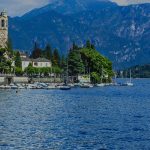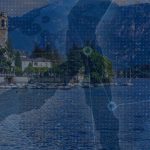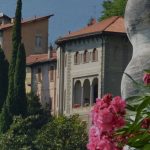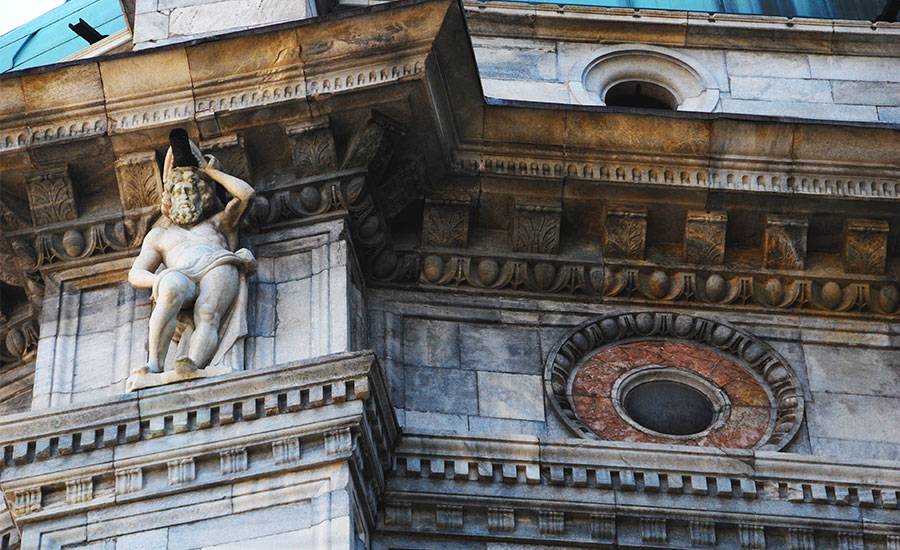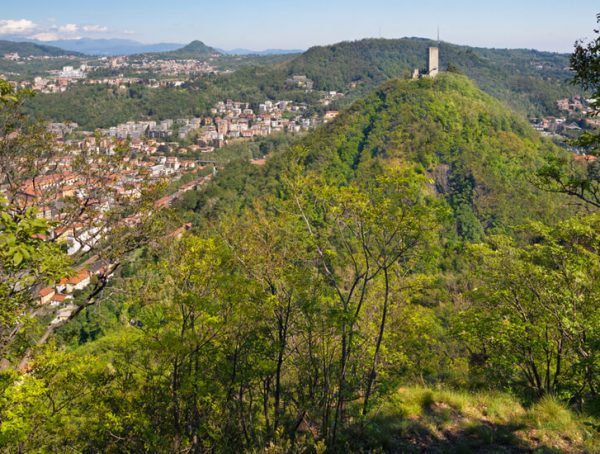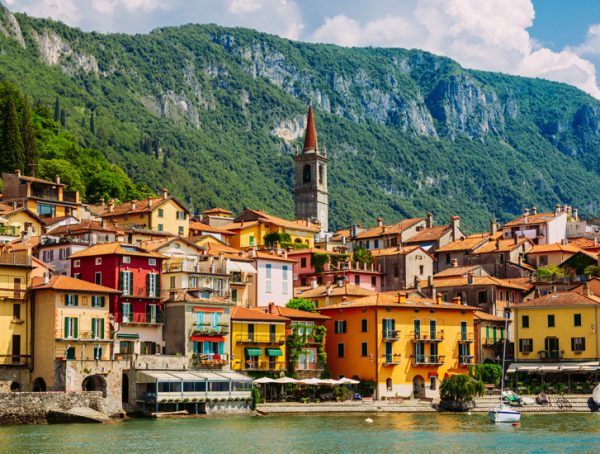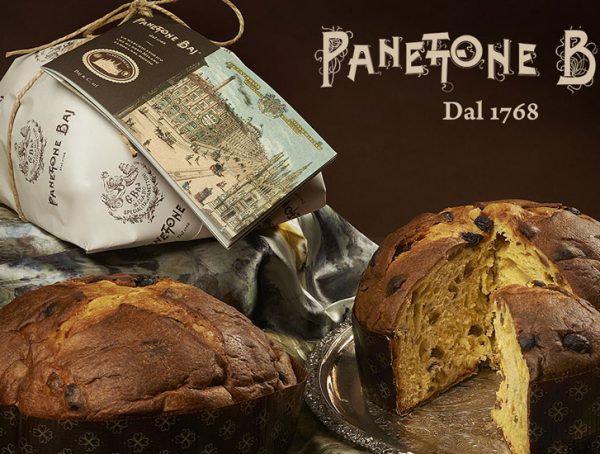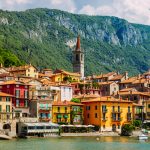The Cathedral of Santa Maria Assunta, commonly referred to as the Duomo of Como, is undoubtedly the main attraction of the city.
It is also one of the most important monuments of northern Italy.
It was built in 1396, ten years after the construction of the Duomo of Milan began.
Today it represents the last Gothic monument built in Lombardy, despite the conclusion of the work dating back to 1770 (conclusion of the dome).
Even today, the Duomo is the third largest religious building in Lombardy, immediately after the aforementioned Duomo of Milan and the Certosa di Pavia.
It is no coincidence that the construction sites of these three buildings all came to life around the same historical period, between 1386 and I 1396.
As you can easily guess, the Duomo is conventionally defined as a Gothic or late Gothic building, but due to the long gestation period of its construction, it has assimilated numerous influences and styles.
It can be defined as an eclectic building: it combines Gothic, Renaissance and Baroque styles.
87 meters long and 75 meters high, at the height of the baroque dome designed by Filippo Juvarra.
The Duomo stands as a balance between areas of the city center and the long lake.
Today it consists of two main architectural groups: the Duomo itself and the Broletto. From the latter rises the civic tower, which acts as a bell tower, given that the Duomo does not have one.
In its reliefs and in its statues it is sprinkled with symbolism and historical and legendary references, deeply rooted in the Como tradition.
The two main historical, artistic and legendary points of interest are the Porta della Rana and the two Statues of Plinio il Vecchio and Plinio il Giovane, located respectively on the two sides of the main entrance of the Duomo facade.
Let’s proceed step by step going between history and legend.
PORTA DELLA RANA
Although this door is located along the northern side of the Duomo, today it is used as a main entrance for visitors and tourists.
Most likely due to its spectacular nature.
Probably sculpted around 1507 by the Rodari, a family of Italian-Swiss sculptors, the Porta delle Rana takes its name from the end of the 1800s.
Many conjectures and hypotheses, more or less plausible, are the basis of this rather curious denomination.
- The first theory is linked to a series of floods on Lake Como. According to legend, the lake would have reached the height of that portal and a frog would have “petrified” on it.
- Another (very imaginative) interpretation concerns the presence of a Ticino canon, who managed to get permission to dig near the Duomo. This is because he is convinced that the frog was a sign linked to the presence of a rich treasure beneath the Duomo. Unfortunately for him it wasn’t, the excavations ended without having found anything.
From a symbolic point of view the frog represents the metamorphosis, the transformation that arises from the need for change.
All the reliefs and sculptures on the door of the frog would seem to center on this theme, concluding at their top with the triumph of the Assumption.
Unfortunately, even today the relief of the famous frog, on the left side of the northern entrance, is headless.
In 1912 a hammering broke the relief, leaving it incomplete.
Despite this, however, the door of the frog remains one of the main points of interest of the building. It has now become customary to caress the frog before entering the Duomo.
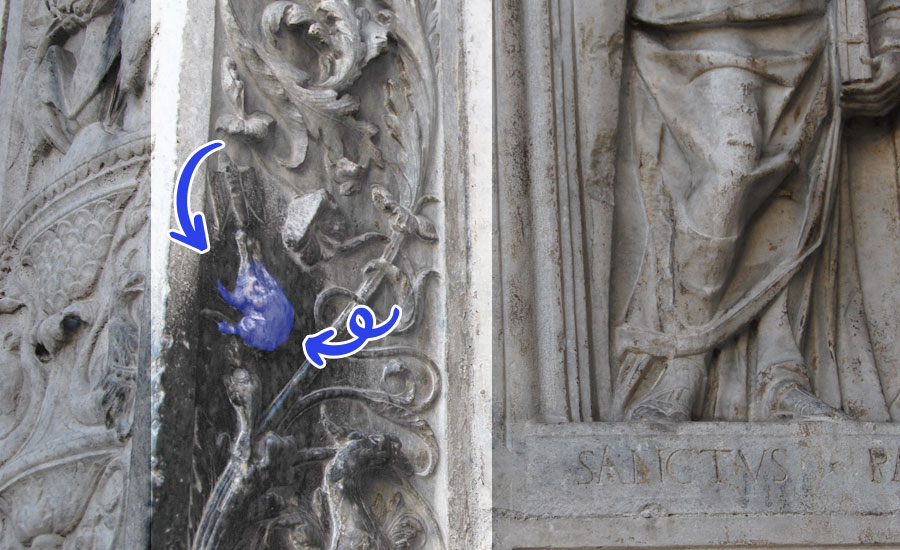
PLINIO IL GIOVANE AND PLINIO IL VECCHIO
The late-Gothic facade of the Cathedral was probably built between 1447 and 1498.
Characterized by a simple and sober style, it looks like a classic salient façade that follows and reflects the 3 internal naves.
Without prolonging on further technicalities, the façade gives us the opportunity to admire, just beside the main entrance of the Duomo, the two very famous statues respectively of Plinio il Vecchio and Plinio il Giovane.
Always made by the Rodari family, the two statues rise above two commemorative tombstones, dictated by Benedetto Giovio in 1498.
Although the two characters were not Christians, they still have great relevance for the city of Como:
- Plinio il Vecchio, philosopher, naturalist writer and Roman magistrate was born in Como in 29 D.C.
- Plinio il Giovane, nephew and then adopted son, was also born in Como between 61 and 62 D.C.
In a climate of counter-reform these two statues were not well accepted, as they represented two pagan characters on the facade of a Christian religious building.
But the resistance of the Como citizens fortunately saved the two statues, transforming them into a real artistic and historical heritage to be preserved.
COMO AND OTHER POINTS OF INTEREST
The Duomo of Como remains today the main attraction of the city, along with other points of interest among which we must surely insert:
- Tempio Voltiano,
- Basilica di San Fedele,
- Museo Archeologico di Como, which preserves the mummy of Isiuret dating from the 9th century BC
- Villa Olmo, rdating back to the 18th century,
- chiesa di Sant’Abbondio, a splendid example of Lombard Romanesque.
The city of Como is certainly dotted with artistic and historical heritages to visit all…
INFO AND CONTACTS
You might also like
More from Made in Comolake
Greenway dei Patriarchi: Varenna itinerary between villages and ancient villas
The Greenway dei Patriarchi is a walk that passes through Varenna and in some of its closest hamlets such as; …
Valentine’s Day on Lake Como: itineraries and walks
San Valentino 2020: cosa fare sul lago di Como e dintorni. Scopri i nostri consigli per passeggiate ed itinerari alla …
Panettone Baj and Marinetti’s futurist movement
Milan has always been a lively city, a forerunner of the avant-garde, fashions and styles. It is the city that around …


